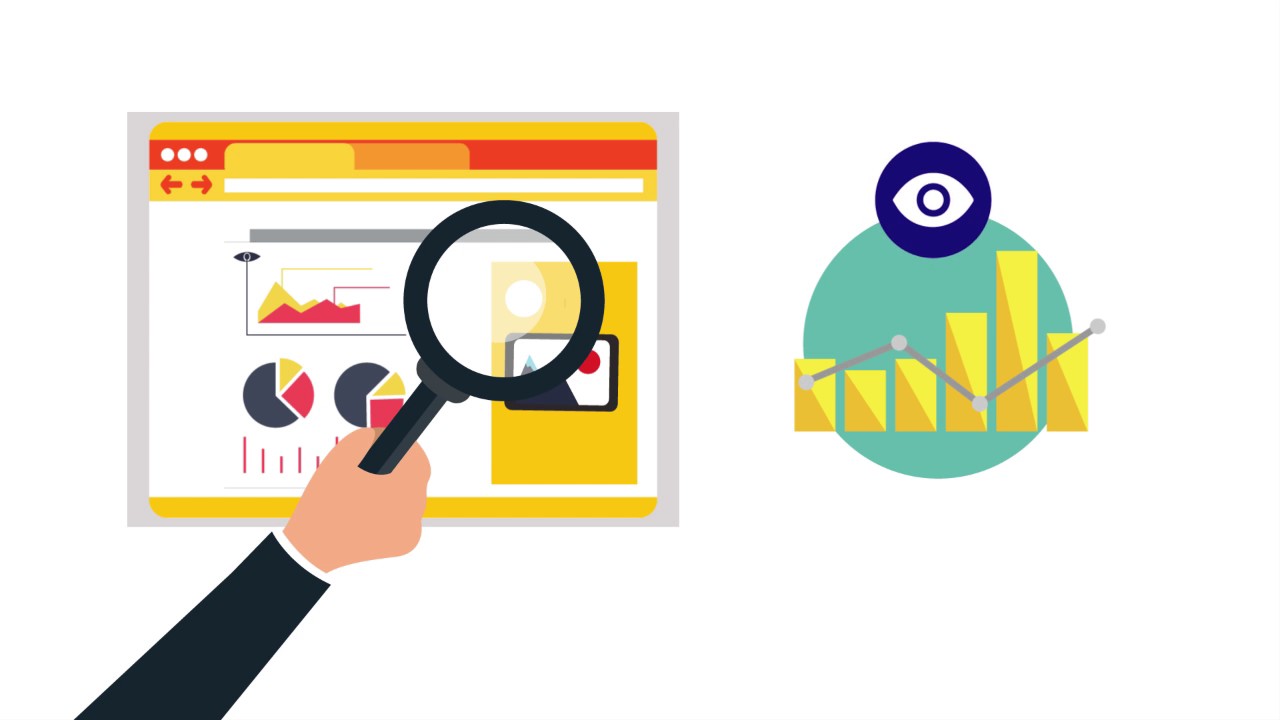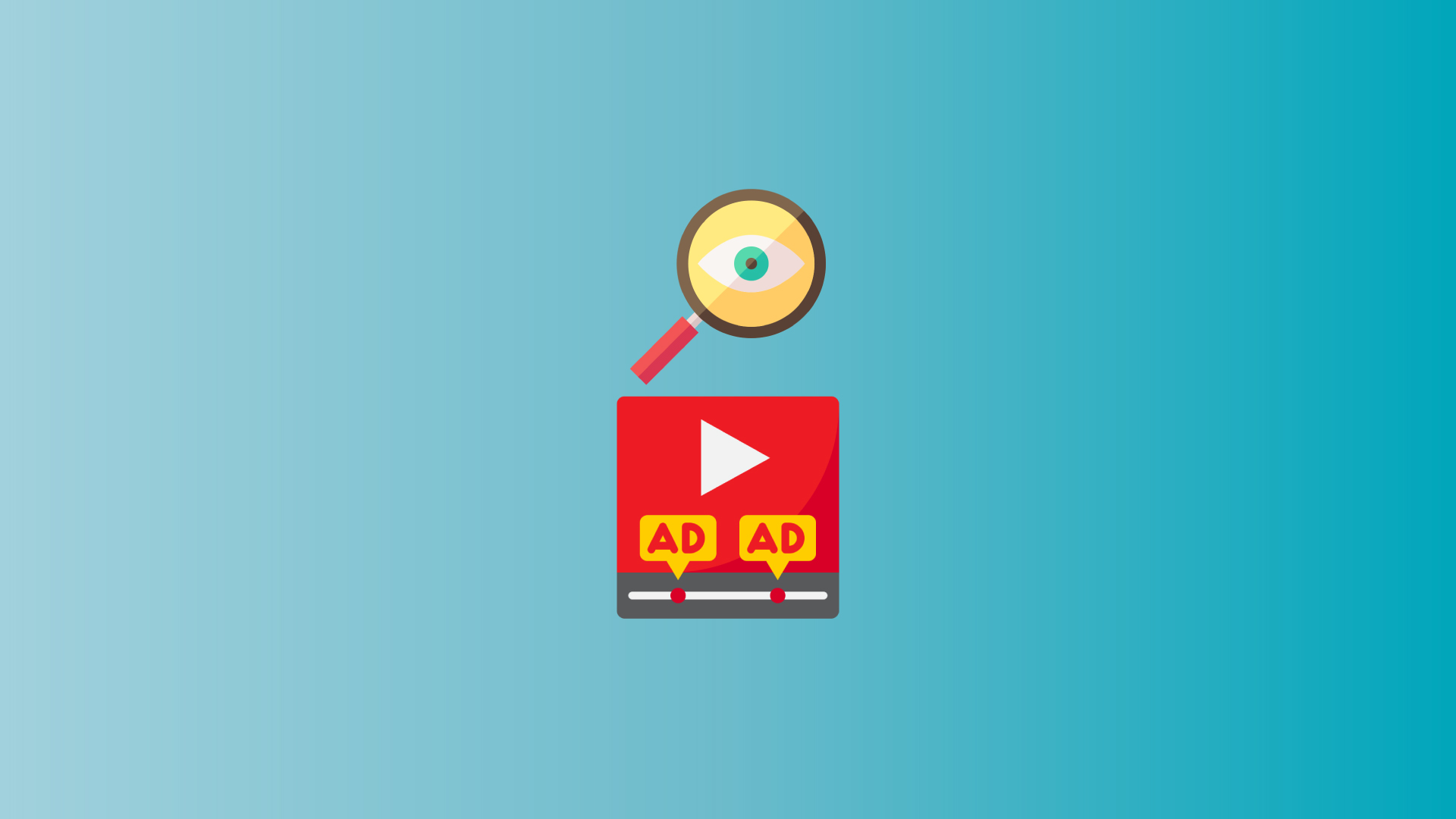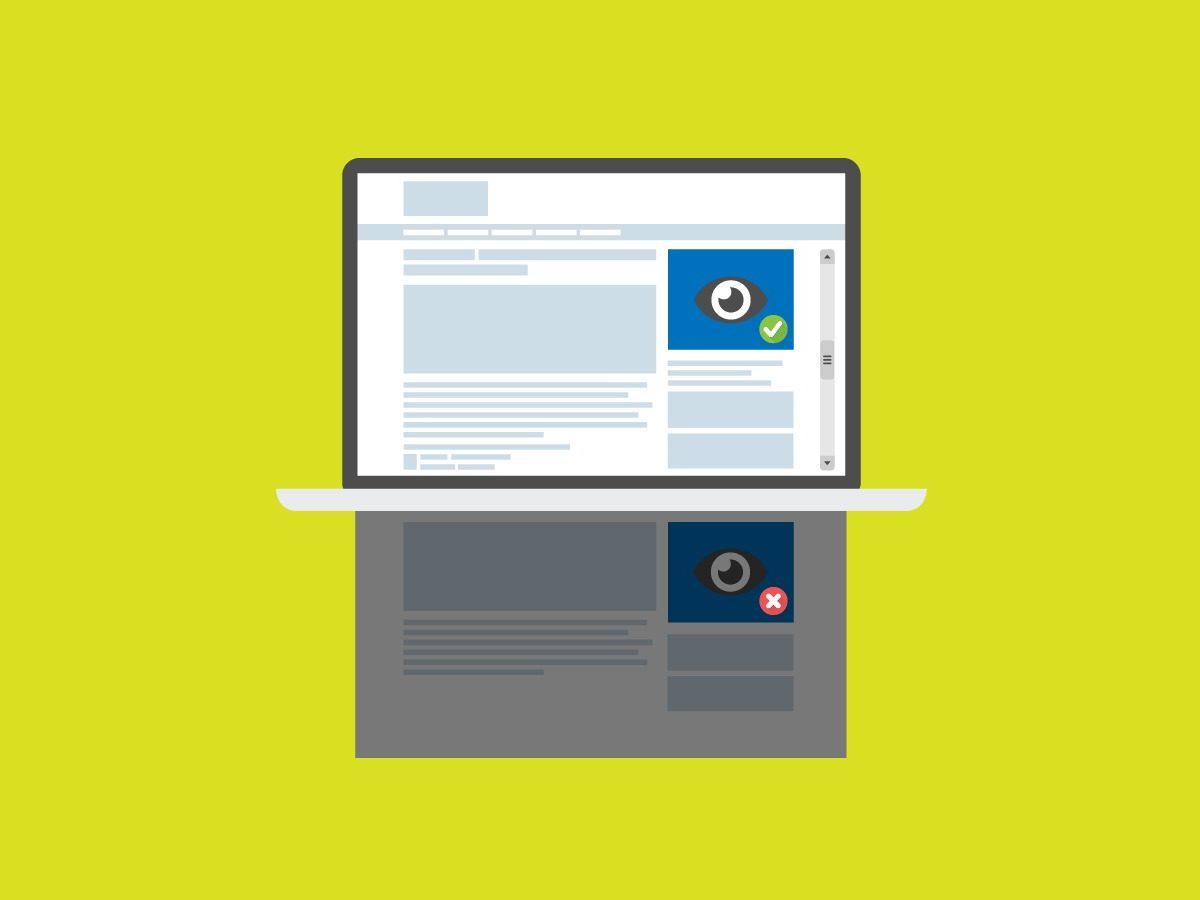
The concept of visibility of ads on a website or mobile application, ad viewability considers ads ‘viewable’ if around 50% of the banner or creative is displayed on the screen for more than a second. This is defined by the Internet Advertising Bureau’s standard for a viewable impression. Read more about banner ads on our blog here.
Why is Ad Viewability an important Metric?
A relatively recent concept in the digital marketing world, ad viewability is important because more than half of all ads aren’t seen by users, despite being paid for by advertisers. During the earlier years, ad networks focused more on the number of ads served, with marketers dividing the number of ads by the number of clicks, to calculate a campaign’s success. This ratio, later known as the CTR or click-through ratio, was quite a sought-after metric. Advertisers later, however, realized that if ads appeared at the bottom of a web page, but users did not scroll right down, that ad was non-viewable, with the impression to be negated. Other factors that contribute to ads being hidden are when users navigate away from the page before the ad itself loads, or when bots or proxy servers and not humans, open pages. Advertisers need to know which percentage of their ads are easily viewable, so they can get a better ROI. Media companies are trying to ensure high visibility to keep these customers happy so they stay.
Effects of Low Ad Viewability on Revenue

Use this step-by-step process to find out whether low ad viewability is hitting your revenue.
- Check account average ad viewability for AdX/AdSense accounts for the past month.
- Navigate to New Query, from Query Tool, selecting the last one month as a date range, month as the report dimension, and then select ‘Active View Viewable, in the report metrics section.
- Hit ‘Run Report’, and check whether you get a score above or below 50%.
- Check this metric against your eCPM over the last year, and using the ‘Edit button, change the date range, setting it to the last 12 months.
- Re-run the report again, and check whether the average eCPM has dropped, risen, or remained constant and whether your Active View viewability has undergone the same thing. Check if your eCPM has dropped and your ad viewable impressions rate is below 50% or lower. That means that low ad viewability is hitting your revenue.
Importance of Ad Viewability Improvement and its Relationship with ROI

Ad viewability and a high ROI are correlated. Publishers must hike their ad’s visibility, and to do so they can start by designing their pages in a way that the ads get loaded with good potential of being viewed. You can design the page so the ad unit is ‘above the fold’, or is a ‘sticky ad’. The latter refers to a kind of ad that doesn’t change position whether the user scrolls up or down.
Publishers also push towards their sites being mobile-friendly, using specific responsive templates that resize immediately when viewed on different devices. Guaranteed to give users a good experience no matter what they choose to browse on, UI is quite the priority. Viewability is also important in terms of design, as there should be symmetry, clear proportions and a clean visual hierarchy, and enough white space. Overall, the design should be clean and pleasing. Speed is of utmost importance. Sites loaded with ads from many networks ensure a long loading time, leading to lower ad viewability, as users navigate away from pages. If you speed up your ad delivery, you can improve viewability. Publishers also use 3rd party software to measure and validate ad viewability, making those metrics available to advertisers. Publishers have a choice of partnering with 15 Media Rating Counils’s Accredited Viewable Display Impression or Ad Verification vendors, tasked with measuring ad viewability across campaigns.
How do you improve Ad Viewability?

Use the best performing Ad Sizes
Vertical formats (like 300*600, and 160*600) and more, have higher viewability rates. Longer vertical ads work great. Try to use one vertical unit on each web page of your site, preferably in the sidebar so it doesn’t interfere with the main content.
Ad Position
A lot of pages have three common ad positions, namely one leader at the page’s top, one ad in the sidebar, and another leader ad at the bottom of the page. This varies according to page design. Small changes in position can make a massive viewability difference. The top leader, if placed below the site navigation bar, affects viewability negatively. Publishers can increase viewability by shifting this ad unit below the site navigation bar. This makes the content visible while the ad loads. Similarly, the bottom ad unit performs better if placed above the comments, page navigation bar, and author biography. Read our blog on optimum ad placement positions to dive deeper into the topic.
Sticky Sidebar Ads
If exploited well, sticky ads can really spike the performance and appearance of ads. Ensure they don’t cover other content and are only sticky when there is no content below them. Usually, websites have the main content on the left, with a narrow sidebar on the right. Put your stick ad in the content section on the left if you want your ads to be viewed with, driving better eCPMs. Some users may find this intrusive, so try putting some kind of ad units in the web page’s sidebar. However, these ads have poor viewable impression rates, as users scroll through content without interacting with the ad on the right. Read our blog about sticky ads to learn more about these interesting ad formats.
Page Load Speed
If your page loads slowly, forget your users. They’ll leave, increasing your bounce rate, decreasing the publisher’s ad viewability rates, leading to publishers leaving too. According to this data, a 1-second delay in page loading reduces views by almost 11%, bringing down conversion rates by around 10%. Publishers can make some technical changes for improving speed, like file compression, image optimization, and redirect reduction, to increase total impressions. Here’s our blog about the relationship between ads and user experience that explains this further.
Lazy Load Ads
You can delay loading parts of a webpage till the user scrolls down. This might boost viewability because only ads that are seen will be loaded. Below-the-fold ads are best for lazy loading because the former has a poor ad viewable impressions rate because they load without the user reaching the page’s bottom. They provide no value because they aren’t seen.
Monitor Viewability Scores
Keep an eye on your ad viewability metrics, because they directly affect eCPMs, which in turn affect your net revenue. Try to maximize your revenue by implementing some basic changes to your ad inventory to raise your ad viewability. If your revenue has been affected by poor viewability, however, don’t expect any magical changes overnight. Wait for at least a month to see better CPMs from top ad providers on your site.
Final Thoughts
In conclusion, ad viewability has quite an effect on publishers’ revenue. If you aren’t seen, there won’t be any earnings. Viewability data can assist publishers in boosting their display inventory’s value. Advertisers and digital marketing teams seek out publishers with a high viewability rate. Sharing viewability data helps brands compare your rates with that of their competitors.
About Publir
As experts in the programmatic advertising domain, Publir offers a one-of-a-kind unified platform specifically built to maximize earnings for digital content creators. We provide complete solutions for Ad Optimization, Subscriptions, Crowdfunding, QuickShop, and AdBlock Recovery. We can help you implement our tools and maximize revenue, all from a single dashboard. Reach out to us here –
- Phone : +1 (877) 229 9767
- Email: inquire@publir.com
